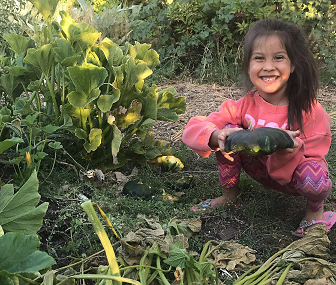
- Details
- By Native News Online Staff
The Center for Indigenous Health Research and Policy (CIHRP) at OSU Center for Health Sciences was awarded a five-year, $10 million grant to expand and grow health and nutrition initiatives in Native communities across the country by the U.S. Department of Health and Human Services’ Office of Minority Health.
The initial grant awarded by the Office of Minority Health was for $2 million over two years to develop the Center for Indigenous Innovation and Health Equity (CIIHE) and included four Native tribes and organizations — the Choctaw Nation and the Osage Nation in Oklahoma and the Southcentral Foundation in Anchorage, Alaska and the University of Alaska’s Center for Alaska Native Health Research.
American Indians and Alaska Natives experience higher mortality and morbidity rates, poorer overall health status, and shorter life expectancies than their non-Indigenous counterparts. High rates of cardiovascular disease, diabetes, obesity and hypertension among American Indians and Alaska Natives contribute to a life expectancy that is seven years less than that of the general population in the U.S., according to a 2021 mortality profile study.
CIHRP Director Valarie Blue Bird Jernigan (Choctaw) said food insecurity is correlated with these diseases and is highly prevalent in Indigenous populations.
“Food sovereignty — the right of people to define their own food systems — restores traditional Indigenous foodways and practices to promote health,” Jernigan said.
Help us ensure that the celebration of Native Heritage never stops by donating here.
This new $10 million grant allows for the food sovereignty programs and initiatives developed by the original four grantees to expand as well as bring in new Indigenous tribes and partners to learn from these original programs and develop their own initiatives based on their own traditions and culture.
“We want to expand the knowledge of traditional food and foodways like foraging, hunting and fishing. There’s also a lot of physical activity in hunting, gathering and farming. We also know that traditional foods are healthier. We’re talking about whole grains, nutrient dense vegetables and food with no added sugars,” she said.
Five new partners in CIIHE include tribes and Indigenous health programs in Alaska, California, Minnesota and North Dakota.
“Connecting people to their traditions and culture that have their own health mechanisms, that’s what we’re testing,” Jernigan said. “Anecdotally, we know that traditional foods are healthier, but this will have data behind it.”
As the nine CIIHE partners develop, implement and broaden their food sovereignty initiatives, CIHRP will collect and analyze the data from each. The original four grantees will work to expand their programs to incorporate collecting clinical measures like blood pressure readings, A1C levels, which are used to monitor diabetes, and lipid panels that measure cholesterol and triglycerides to hopefully record the health benefits of implementing traditional food programs into their communities.
With the new grant funding, the four initial CIIHE grantees will each receive $175,000 a year to grow their programs and add the clinical measures component while the five new CIIHE partners will receive $100,000 each year for training, program development and piloting.
In Oklahoma, the Osage Nation’s Harvest Land Farm, which grows produce and processes meat, will develop a mobile farmer’s market to take its products to different communities across the Osage Nation reservation.
And the Choctaw Nation of Oklahoma plans to expand Growing Hope, its traditional garden initiative that provides its citizens with seeds from plants that trace back to the tribe’s ancestral homelands to plant and cultivate in their home gardens, as well as information about caring for the plants and recipes that utilize produce from their gardens.
Jernigan said traditional growing has become a popular way to revitalize the traditions and cultures of Indigenous tribes. It’s something that she’s seen first-hand as she’s cultivated her own Growing Hope garden.
“Instead of watching another episode of something on TV, I know I need to go out to the garden and water or pick things that are ripe. Then you end up weeding and next thing you know you’ve been out there for an hour working and spending time outside in nature,” she said. “It changes your relationship with food and your own wellness. As I get better at growing my own garden, I solidify my identity and my health gets better over time.”
More Stories Like This
Chumash Tribe’s Project Pink Raises $10,083 for Goleta Valley Cottage Hospital Breast Imaging CenterMy Favorite Stories of 2025
The blueprint for Indigenous Food Sovereignty is Served at Owamni
Seven Deaths in Indian Country Jails as Inmate Population Rises and Staffing Drops
Sen. Luján Convenes Experts to Develop Roadmap for Native Maternal Health Solutions


